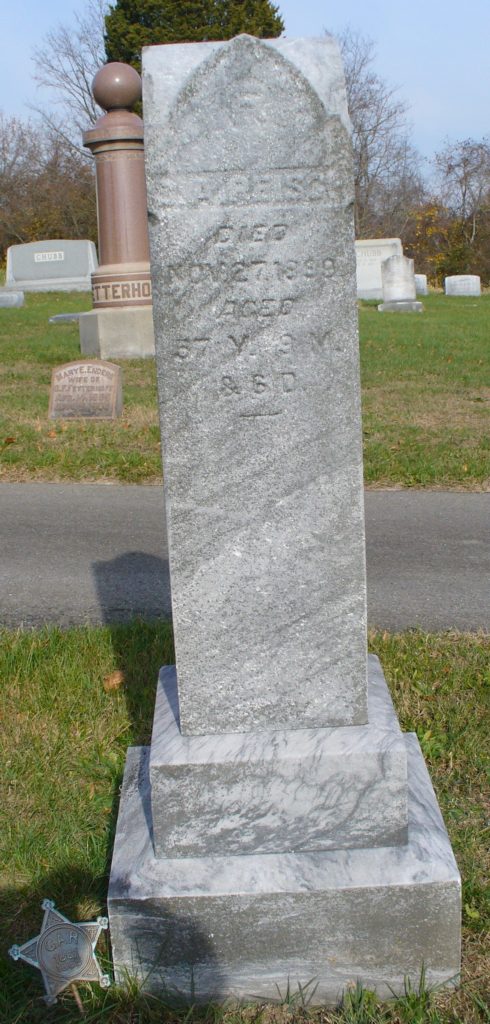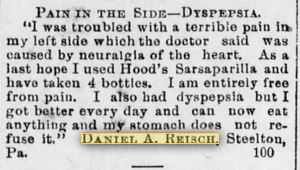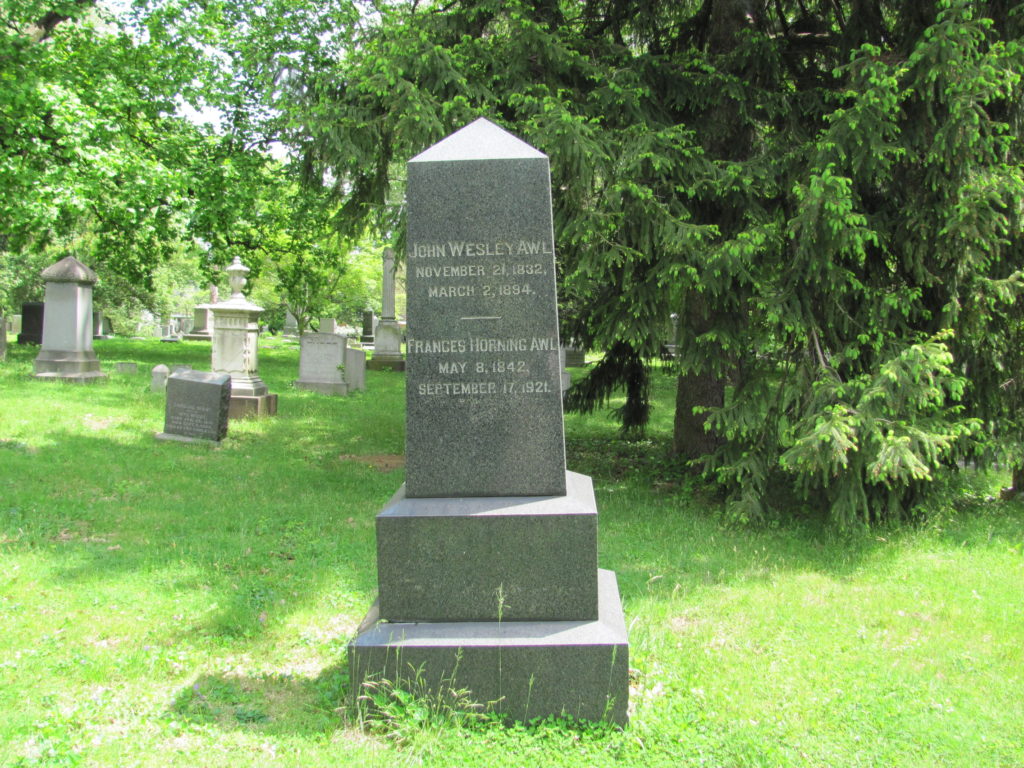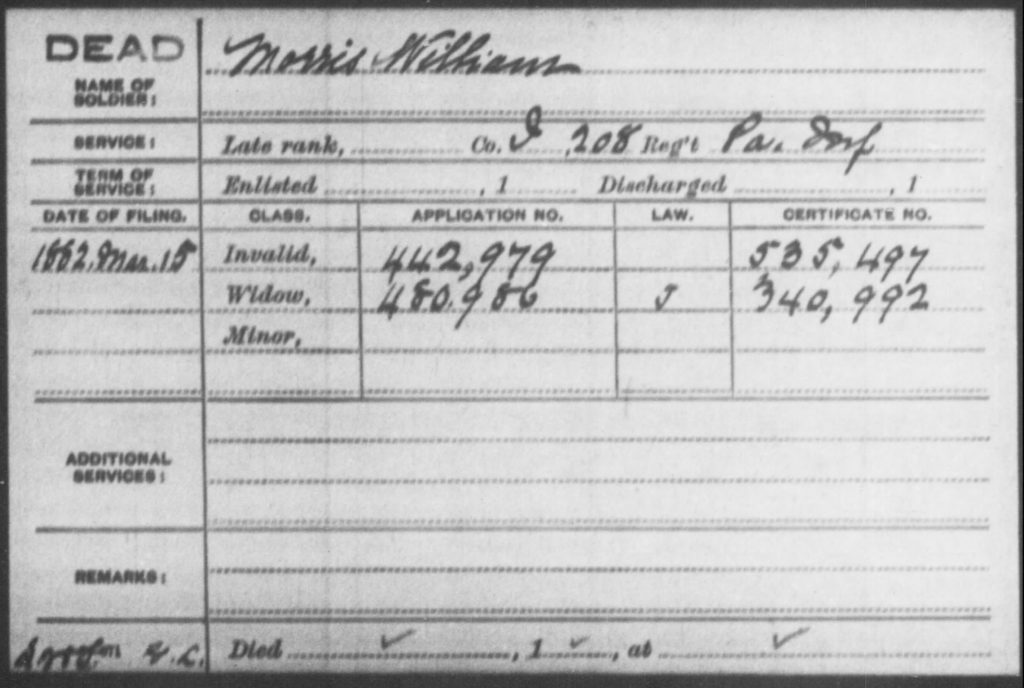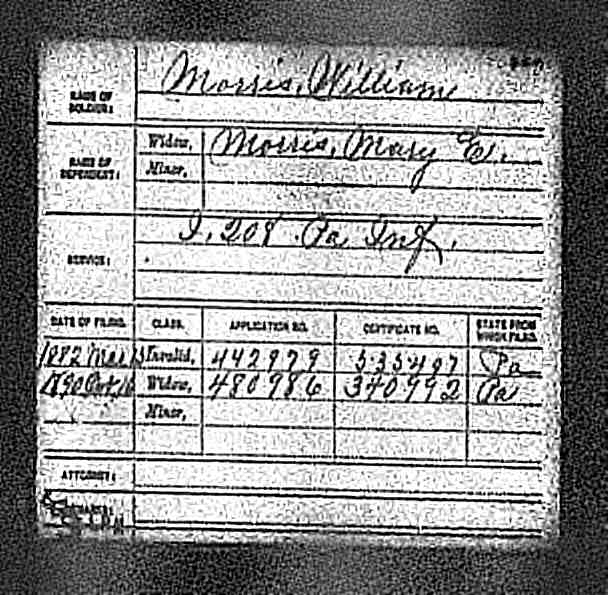Daniel A. Reisch – White Supremacist, 1866
Posted By Norman Gasbarro on December 17, 2019
Daniel Reisch, Civil War veteran and one of the Charter Members of the Slocum G.A.R. Post at Halifax, Dauphin County, Pennsylvania, died at Steelton, Dauphin County, on 27 November 1899.
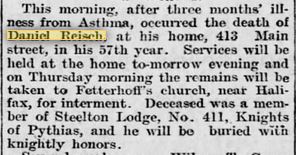
A brief obituary appeared in the Harrisburg Telegraph, 28 November 1899:
This morning, after three month’s illness from Asthma, occurred the death of Daniel Reisch, at his home, 413 Main Street, in his 57th year. Services will be held at the home tomorrow evening and on Thursday morning, the remains will be taken to Fetterhoff’s Church, near Halifax, for interment. Deceased was a member of Steelton Lodge, No. 411, Knights of Pythias, and he will be buried with knightly honors.
_____________________________________
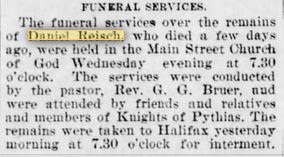
The Harrisburg Daily Independent of 1 December 1899 gave information about the funeral:
FUNERAL SERVICES
The funeral services over the remains of Daniel Reisch, who died a few days ago, were held in the Main Street Church of God Wednesday evening at 7:30 o’clock. The services were conducted by the pastor, Rev. G. G. Bruer, and were attended by friends and relatives and members of Knights of Pythias. The remains were taken to Halifax yesterday morning at 7:30 o’clock for interment.
___________________________________
Who was Daniel Reisch, and what was his role in the Civil War?
On 3 November 1862, Daniel A. Reisch was mustered into service in the 172nd Pennsylvania Infantry, Company G, as a Private, a regiment/company in which he served until honorable discharge on 31 July 1863.
A second enlistment occurred on 21 February 1865, when he joined the 192nd Pennsylvania Infantry, Company K, as a Private, and served honorably until discharge on 24 August 1865.

The Pension Index Card, shown above from Fold3, notes that on 18 July 1891, based on his service in both regiments, he applied for a pension, which he received and collected until his death, the date of which is confirmed on the card. A pension was applied for for a minor child or children, which as the card indicates, was granted.
Ancestry.com public trees reveal that Daniel A. Reisch was married three times, each time with issue: (1) Mary Paul (1846-1866), at least one known child; (2) Elizabeth Bowman (1845-1887), at least ten known children; and (3) Louisa Cupp Strausser (1863-1947), at least two known children, the last of whom was born about 1892.
In 1894, multiple instances have been located that Daniel Reisch was giving paid testimonials for a product known as Hood’s Sasparilla. One example is from the Harrisburg Daily Independent, 7 May 1894:
PAIN IN THE SIDE – DYSPEPSIA
“I was troubled with a terrible pain in my left side which the doctor said was caused by neuralgia of the heart. As a last hope I used Hood’s Sasparilla and have taken 4 bottles. I am entirely free from pain. I also had dyspepsia but I got better every day and can now eat anything and my stomach does not refuse it.” DANIEL A. REISCH, Steelton, Pa.
Apparently, the sasparilla was not a cure-all for Daniel Reisch, since he died a little more than five years later of asthma at the young age of 57.
Other than being married three times and having children almost every two years following his Civil War service, Daniel A. Reisch can also be remembered for his racist views.
After the war, Daniel A. Reisch openly supported the white supremacist views of Heister Clymer by signing a call for denial of equal rights to African Americans, both those who were previously slaves and those who were previously freemen. The statement was published in the Harrisburg Patriot of 24 July 1866 and included his name, regiment, company and rank.
Heister Clymer was a white supremacist candidate for Pennsylvania Governor on the Democratic Party ticket in 1866, and was previously profiled here on 26 April 2016.
The call for a meeting of Union Soldiers was printed in the Harrisburg Patriot, 24 July 1866, along with an up-to-date list of Clymer supporters who openly supported Heister Clymer‘s white supremacist views and wanted to deny “negro equality and suffrage” even to those who had been free men before the war.
The undersigned honorably discharged Union soldiers, believing that we battled in the late war for the Union of these States, and had successfully maintained it, view with alarm the persistent efforts of radical men who seem determine, practically to destroy the Union we went forth to save. They would have the community believe that Union soldiers are willing to give up in the hour of victory the great object to which their sacrifices and toll and blood were given….
Therefore we unite in requesting all the honorably discharged officer, soldiers and seamen of Dauphin County who favor the wise and constitutional policy of President Johnson, who oppose the doctrine of negro equality and suffrage, and desire the election of the Hon. Hiester Clymer, to meet in Mass Convention at the Democratic Club Room, Walnut Street, below Third, Harrisburg, at 7 1/2 o’clock, on the evening of the 25 July 1866, for the purpose of electing fourteen delegates to the Convention of Union Soldiers, which is to assemble in this city [Harrisburg] on Wednesday, 1 August 1866.
The Dauphin County veterans who signed the racist petition calling for the meeting were from a variety of regiments and social levels. Included in the list were some residents of Upper Dauphin County, the area north of Peter’s Mountain – all of which is included in the geographic area of the Civil War Research Project.
Daniel A. Reisch was only one of many honorably discharged Union soldiers who openly supported the white supremacist gubernatorial campaign of Heister Clymer in 1866. The full list of those with a connection to Upper Dauphin County will be presented over time.
______________________________________
Newspaper clippings from Newspapers.com.
 ;
;
